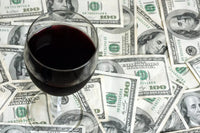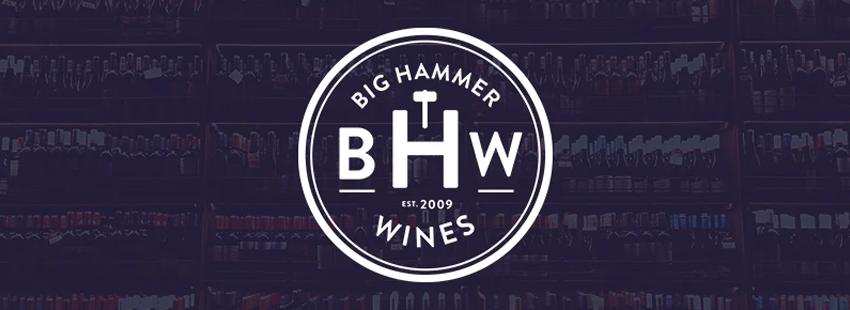
What do you know about theprice of wine in the U.S.? Are you paying too much? How can you evaluate wine prices?
Most people know the cheapest wines sit on the bottom shelf, and the most expensive ones are at the top or locked up in a cabinet.
But does a bottle of wine with a price of $150 taste six times better than a $25 bottle?
Let’s investigate.
Average Price Per Ounce of Various Beverages in the U.S.
This table compares the average retail price per ounce in the U.S. for a variety of beverages. Gasoline is a reference point.
|
Avg Per Ounce Price USD |
|
|
Nestle Water |
$0.013 |
|
Gasoline (not a beverage, for reference purposes) |
$0.022 |
|
Milk |
$0.024 |
|
Coke |
$0.053 |
|
Evian |
$0.066 |
|
Domestic Beer |
$0.128 |
|
Imported Beer |
$0.255 |
|
All Table Wine ($9.03/bottle) |
$0.356 |
|
Mid-Priced Wine ($12.04) |
$0.473 |
|
Fireball Cinnamon Whiskey |
$0.611 |
|
Avg Premium Wine ($25) |
$0.986 |
|
Maker’s Mark Whisky Kentucky Straight Bourbon |
$1.185 |
|
Glenlivet Single Malt Scotch Whisky |
$1.636 |
|
Avg Super Premium Wine ($50) |
$1.972 |
|
Avg Luxury Wine ($100) |
$3.943 |
|
Cult Wine (Screaming Eagle $2,750) |
$108.436 |
So, is beer a relative bargain? Is fancy wine worth it? Let’s dig into the economics of wine.
The Economics of Wine
While it’s hard to get data from wineries, and almost impossible to know how a specific wine is priced, we can make some broad assumptions.
Let’s look at a wine priced at $10 retail in a grocery store.
About a quarter of the price is the cost of the wine, other materials (bottle, label, cork,) and the processing costs. The producer’s profit equals a quarter of the price. The remaining 50% is split between the distributor and the retailer.
These percentages vary but generally 50% (if not more) of the total price lines the pockets of the three-tier alcohol system set in place under Federal law.
For that $10 wine, the cost of the wine is likely worth less than $1, with a total cost of around $2.50. Taxes and profits make up the rest.
Wineries make their highest profit fromselling wine directly to the consumer (DTC) in the tasting room or on their website. Distribution through the three-tier system cuts the margin by half.
Rob McMillan of Silicon Valley Bank estimates winery profit margins in 2012 were only about 6.9% before taxes. Costs associated with the three-tier system greatly increase the price of your favorite wine.
Let’s look at some of the details impacting the price of a bottle of wine.

Factors Impacting the Price of Wine
Wine pricing is complex, encompassing everything from agriculture and sustainability to marketing and distribution. Beyond growing and processing, factors include history, global trade, consumption patterns, legal and regulatory issues, culture, and geography.
Whether you drink cheap or off-the-charts expensive wine, the process is the same. Wine production is a capital and labor-intensive business.
Lower-tier wine producers focus more on cost management, while boutique and ultra-premium wineries focus more on quality, brand and image.
Winemakers can buy grapes from a vineyard or purchase land and grow their own. The cost of land, planting, and managing a vineyard is substantial.
When making wine, costs include building and warehouse space, equipment, and labor. Small producers can make and bottle their wine in third party facilities, reducing costs.
Larger producers can take advantage of economies of scale. These companies often undercut smaller ones by reducing prices.

Planting and Managing a Vineyard
Planting and managing a vineyard is no easy process. Depending on the location of the vineyard, the cost of land can be high. Many winemakers choose to buy grapes to avoid these costs.
After acquiring land, which might require financing costs, the property must be cleared and prepared before planting vines. This might entail hiring site experts, consultants, and other professionals. Other costs include tractors, lab equipment, and soil additives.
To plant, owners need to buy vines, rootstock, and other materials such as post-hole diggers, trellising, irrigation, pumps, and cover crops.
Ongoing maintenance needs include pest and weed control, disease treatment, composting, pruning, harvesting, and planning for replacement materials and vines.
Every step requires labor and adding organic techniques increases cost.
Depending on the location and specific aspects of the land, the number, type and quality of grapevines, and the density and yields desired, costs can escalate, impacting the final price of the wine.
Other vineyard considerations are weather mitigation treatments, methods to prevent animals from eating the crop, and the time it takes to establish a producing vineyard (at least four years,)
Supply and demand, competition, and consumer trends also impact the price of grapes.

Producing or Crafting Wine
A winemaker needs space to make wine. Options include borrowing, renting, buying, or constructing a building,
Determining the capacity, varieties and styles of wines desired, a vintner finds space for handling the grapes, fermenting them, aging the wine, and warehousing inventory. Other building costs include utilities, insurance, and maintenance and repair.
Winery equipment can be leased, or purchased new or used. Items include bins, sorting tables, destemmers, crushers, fermentation tanks, forklifts, hoses, barrels, bottles, corks, and labels.
Other expenses include quality control and laboratory expenses, and equipment maintenance, repair, and replacement costs.
Labor costs include salaries and benefits for a winemaker, an assistant winemaker, other assistants, and any tasting room staff.
Branding and marketing costs, and distribution and administrative expenses (taxes, reporting, technology) all increase costs.
The Three-Tier Alcohol Distribution Model
Here is where wine prices increase the most. Beyond wine’s production costs, the most significant factor in the price of a bottle of wine in the U.S. is the profit margins associated with the three-tier system.
There are three levels of margin built into the final price of wine, depending on the business model: producer or importer, distributor, and retailer.
Profits for winemakers can range from 0-50%, with 35-50% added on at each succeeding tier.
Below is a broad snapshot of the cost composition of a California Cabernet Sauvignon at three different retail price points.

The relationship between the factors can change depending on the winemaker’s decisions.
Imported Wine Pricing Model
Here is a look at a pricing model for imported wine.
For a $10 bottle of imported wine:
|
Ex-cellar/Ex-chateau/FOB price of wine in-country of origin |
$10.00 |
|
Landed Cost in the U.S. (includes federal tax) |
$12.00 |
|
Tier 1: + Importer Margin (Profit) 35-55% |
$18.46 |
|
Tier 2: + Distributor Margin (Profit) 35-50% plus state tax & freight) |
$27.69 |
|
Tier 3: + Retail Margin (Profit) 35-50% (plus sales tax) |
$41.54 |
|
Total Markup |
246% |
Built-in profit: $29.54, 71% of the total price, for a $12.00 landed cost imported wine (excludes duties or tariffs such as the 25% put into place in October 2019 on some French wines.)

Other Wine Pricing Factors
As if this wasn’t enough to complicate the price to the consumer, there are still other factors that impact the price of a wine.
- The history of a wine, a winery, or a vineyard can impact the consumer price. A storied vineyard, a historic winery, or the reputation of a wine can result in a higher price.
- A unique classification or designation, such as the AVA (American Viticultural Area) designation in the U.S., allows a winemaker to command a higher price. AVA defines the boundaries of growing areas with specific characteristics and adds a level of prestige to these wines.
- More successful vintages can sell for higher prices than those of less successful vintages.
- Local, state, and federal taxes increase prices.
- Consolidation along the supply chain impacts price. As suppliers, distributors, and retailers gain power, they can often dictate pricing and undercut independent businesses.
- Global competition impacts availability and choice, thereby, affecting prices in the marketplace.
- Supply and demand: The less availability, the higher the price, such as in Burgundy, where limited supply and extreme demand resulted in exorbitant prices.
- Critics and scores, the “Robert Parker” effect: wines rated 90 and above tend to carry higher prices.
- The perception that higher price = better quality is a trend called “premiumization.” This trend resulted in the consumer paying higher average prices overall because perception matters.
What Does it All Mean?
At the end of the day, wine producers, distributors, and retailers will charge what the market will bear. They are all loath to reduce prices but happy to increase them.
Does price guarantee quality? No, but it can be an indicator. Only you can decide.
Consumer perception drives wine pricing perhaps more than any other factor.
Factors such as image, prestige, lack of knowledge, marketing, and peer pressure impact consumers’ perceptions.
Studies have shown that consumers and critics alike can’t tell the difference in quality in blind tastings. When told a wine is “good,” they perceive a better taste.
Finally, a fair price for a bottle of wine is what you are willing to pay for it.

Big Hammer Wines Pricing Model
At Big Hammer Wines, we promote transparency and fair pricing through connecting buyers and sellers and cutting out middlemen. We run on very low overhead with our Direct to Consumer online wine portal.
Here's how the BigHammerWines.com pricing model works, starting with the same $10.00 bottle of imported wine.
|
Ex-cellar/Ex-chateau/FOB price of wine |
$10.00 |
|
Landed Cost (includes federal tax) |
$12.00 |
|
BHW Retail Price (includes free shipping on 6) |
$19.99 |
|
Total Markup |
20% |
Built-in profit net of shipping costs (which accrue to retailer:) $2.40, 20% of the total price on a $12.00 landed cost imported wine.
We want to educate consumers and offer the best quality/value wines. Our BHW Real Wine Club offers top-quality wine at the best prices.
The club is flexible, includes free shipping for 6+ bottles. You can cancel any time. Learn more about wine from the BHW Real Wine Club.
Big Hammer Wines
The wine experts at Big Hammer Wines taste thousands of wines every year from around the globe, looking for quality and value. This special offer reflects the passion we have for our clients.
Discover the world through its wines, Click Here! Visit Bighammerwines.com and become a wine expert!
Comments (1 Response)
Leave a comment (all fields required)
Comments will be approved before showing up.



12 October, 2020
Bill Birrell
What a great article! I worked at Sherry Lehmanns in the 1980’s and never had seen the cost/margin structure. Thank you! -Bill